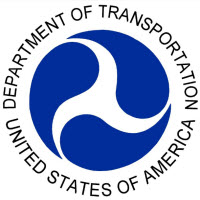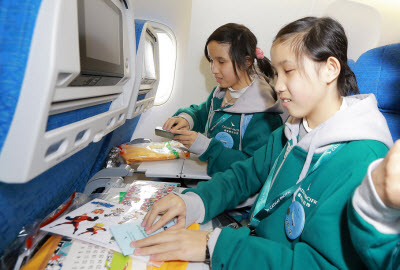Exclusive interview with US DOT on Hong Kong CAD disability discrimination rule
- Written by Roberto Castiglioni
 Last June, Reduced Mobility Rights came across a discriminatory rule of the Hong Kong Civil Aviation Department limiting access to air travel for disabled people.
Last June, Reduced Mobility Rights came across a discriminatory rule of the Hong Kong Civil Aviation Department limiting access to air travel for disabled people.
In August 2008, Hong Kong CAD issued Flight Operations Notice 04/2008. The FON contains a seating allocation rule limiting the total number of people with disabilities on-board a flight to the total number of floor level exits on the plane. On average, there are ten floor level exits on long haul planes used by Hong Kong registered airline Cathay Pacific Airways.
The rule states “operators are to ensure that the maximum number of passengers with reduced mobility(1) boarded in the aircraft must not exceed the total number of floor level emergency exits fitted in the aircraft, and furthermore only one such passenger shall be allocated to each floor level emergency exit located in the passenger zone. Passengers with reduced mobility shall be seated where they will not obstruct emergency exits, impede the crew in their duties, obstruct access to emergency equipment or hinder aircraft evacuation.”
The rule was not immediately challenged because of the language used, passengers with reduced mobility, which lead to believe this limit would only apply to wheelchair users.
However, the CAD definition of the terminology used broadened the applicability of the rule. "Passenger with reduced mobility means any person whose mobility when using air transport is reduced due to any physical disability (sensory or locomotor, permanent or temporary), intellectual disability or impairment, or any other cause of disability, or age, and whose situation needs appropriate attention and the adaptation to his or her particular needs of the service made available to all passengers.”
Last July, Reduced Mobility Rights wrote a letter to the Secretary for Transport and Housing of Hong Kong, asking for comments on the discriminatory rule.
"CAD has set out specific guidelines for ensuring cabin safety in the passenger seat allocation process. The objective of these  requirements is to ensure the safety of the passengers with disabilities, the crew, as well as other passengers," a spokesperson for the Secretary for Transport and Housing told Reduced Mobility Rights. “That said, airlines are allowed to make special and prior arrangements to facilitate special situations, such as a group of passengers with disabilities travelling on board, subject to the satisfaction of CAD from cabin safety perspective.”
requirements is to ensure the safety of the passengers with disabilities, the crew, as well as other passengers," a spokesperson for the Secretary for Transport and Housing told Reduced Mobility Rights. “That said, airlines are allowed to make special and prior arrangements to facilitate special situations, such as a group of passengers with disabilities travelling on board, subject to the satisfaction of CAD from cabin safety perspective.”
The spokesperson explained that any group of disabled passengers wishing to travel together on a Hong Kong registered aircraft should inform the ticket agent or the airline. The airline should then submit their proposal, together with a safety risk assessment including but not limited to the number of PRM and their level of disability, seating arrangements of the group of PRM, and number of additional cabin crew to be carried for CAD’s consideration in accordance with stipulated requirements. But the “ad hoc” waiver of the CAD rule is not known to booking agents limiting access to the waiver to some groups only.
The CAD rule puts Hong Kong at odds with European and U.S. laws. Under Regulation EU (ec) 1107/2006 there is no such restriction, while § 382.17 of the United States Air Carrier Access Act states airlines must not limit the number of passengers with a disability who travel on a flight.
Reduced Mobility Rights reached out to the US Department of Transportation for comments. “The Department is aware of the Hong Kong CAD rule limiting the maximum number of passengers with disabilities on a flight,” a spokesperson for the DOT told Reduced Mobility Rights. “In September 2008, Cathay Pacific, a Hong Kong-licensed carrier that operates in the U.S. market, notified the Department that it was obliged to comply with provisions in the Air Operator’s Certificates (AOC) and in the implementing Flight Operations Notice (FON) 04/2008 (dated August 2008) that strictly limit the number of passengers with disabilities on a flight.”
 Cathay Pacific requested a conflict of laws waiver from compliance with the requirement of section 382.17. Under 14 CFR 382.9, foreign airlines may request a conflict of laws waiver when they believe a foreign law legally binding on them precludes compliance with a provision of Part 382.
Cathay Pacific requested a conflict of laws waiver from compliance with the requirement of section 382.17. Under 14 CFR 382.9, foreign airlines may request a conflict of laws waiver when they believe a foreign law legally binding on them precludes compliance with a provision of Part 382.
“The provisions in both the 2002 AOC requirements document and the 2008 FON essentially stated that the maximum number of passengers with reduced mobility boarded in the aircraft must not exceed the total number of floor level emergency exits fitted in the aircraft,” the DOT spokesperson explained. “Section 382.9 on conflict of laws waivers states that a carrier’s request must include any alternative means that could effectively achieve the objective of the provision subject to the waiver. Neither the AOC nor the FON provided by Cathay Pacific contained any provision for acceptable alternative means of compliance with the number limit provisions. As such, we granted Cathay’s waiver request based on the conflicting CAD requirement having a legally binding effect on the carrier.”
However, the DOT instructed Cathay Pacific to provide disabled passengers to whom transportation is denied on the grounds of the discriminatory rule set forth in FON 04/2008 with a written statement that explains the reason for the refusal of transportation.
Recent amendments to CAD 360 could allow the DOT to review the grounds on which the existing waiver was granted in 2008.
“We understand that recent amendments to CAD 360 reference the European Aviation Safety Agency (EASA) Acceptable Means of Compliance (AMC) and Guidance Material (GM), which contain procedures for requesting CAD approval for alternative methods of compliance,” the DOT spokesperson said. “The current CAD 360 provisions addressing PRM number limits, however, contain no reference to the AMC. Nonetheless, the Department intends to look into this matter further to determine whether compliance alternatives may be available to Hong Kong carriers.”










